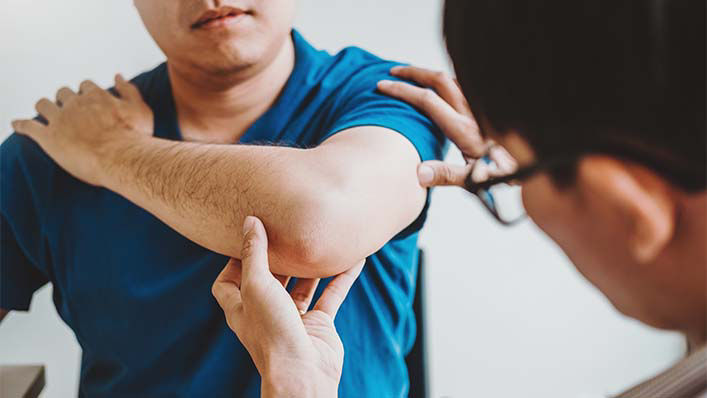Trigger finger
Trigger finger treatment to help you regain control of your hand
Trigger finger, also known as stenosing tenosynovitis, is a condition that makes it hard to straighten your finger. Trigger finger occurs when the soft tissues of a tendon in your finger thicken, preventing the tendon from moving freely. This causes the finger to click, catch or lock as it bends and straightens.
It can be painful and frustrating to lose function of your finger, but we’re here to help. Our team of orthopedists, board-certified hand therapists,
"The whole team was excellent. They were very kind and made it a point to make me feel relaxed and comfortable about my surgery and aftercare."
Symptoms of trigger finger
Trigger finger gets its name because of the snap the finger makes when it becomes unstuck. But there are other common symptoms to watch for:
- Finger sometimes becomes stuck or “locked,” making it difficult to straighten
- Feeling as though the middle knuckle of the finger or top knuckle of the thumb is the problem when finger locks
- Needing to use the opposite hand to fully straighten the finger
- Discomfort or tenderness at the base of the finger or thumb on the palm side of the hand
- Catching, popping or clicking as the finger moves
- Swelling or a small lump in the finger
If you have any of these symptoms, it might be time to make an appointment with a hand specialist.
What causes trigger finger?
The cause of trigger finger isn’t always clear, and we don’t need to know the cause to treat your condition.
We do know that trigger finger is more common in people who have rheumatoid arthritis, gout, diabetes or another illness that causes inflammation. Repeated gripping of the hands can also increase your risk of developing trigger finger. People who work with tools or operate heavy machinery can be more likely to have trigger finger.
Treatments for trigger finger
Whether your condition is mild or severe, our team of hand specialists can help you get back the function of your finger. We’ll work with you to identify the best treatment option for you. Common treatments for trigger finger include:
Wearing a splint at night
A splint can limit the full motion of the tendon, which can help the tendon heal. Splints for trigger finger keep the finger or thumb straight. Wearing a splint at night can prevent you from bending your affected finger while you’re sleeping and make it easier to straighten your finger during the day.
Our board-certified hand therapists can custom fit splints and other hand
Corticosteroid injections
Corticosteroids are a strong anti-inflammatory medicine. When injected into the affected finger, corticosteroids can relieve tendon inflammation that’s causing trigger finger symptoms. It can also provide short-term pain relief and reduce inflammation when other medications aren’t effective or not an option.
Hand therapy
At TRIA, our specialized hand therapists work closely with hand surgeons and other orthopedic specialists to design an individualized treatment program for you.
Trigger finger release surgery
When other treatment options aren’t effective, we might recommend
Trigger finger release surgery is an outpatient surgery performed in our clinics. When you arrive, we’ll use local anesthetic to numb your hand and wrist so you’ll be comfortable during the procedure. Since you won’t be under general anesthesia, you can go home shortly after your appointment. Outpatient procedures are typically more comfortable and affordable for our patients.
Specialty treatment programs for trigger finger

Integrative medicine
We are the only orthopedic practice that has an integrative medicine program to manage hand and wrist pain. Integrative medicine uses holistic treatments that are scientifically proven to help reduce pain and promote healing, including acupuncture, our TRIA Well consults and others.
Integrative medicine can be used to complement your treatment program, or after trigger finger release surgery to help you recover.

Orthobiologics
TRIA is at the forefront of
Orthobiologic treatments can be used instead of surgery or in addition to surgery. While there are many different types of orthobiologic therapies, platelet rich plasma (PRP) injections are the most commonly used orthobiologic treatment.
